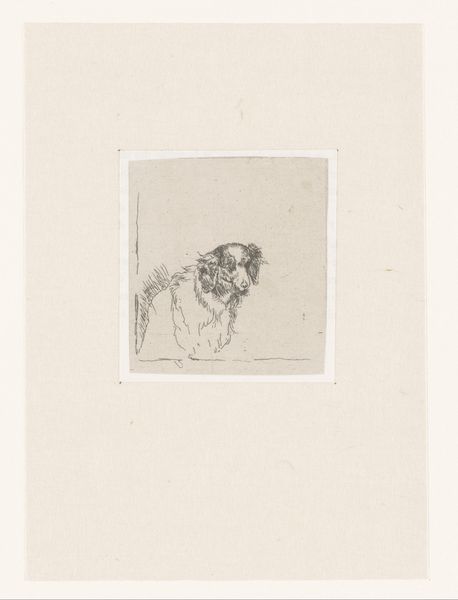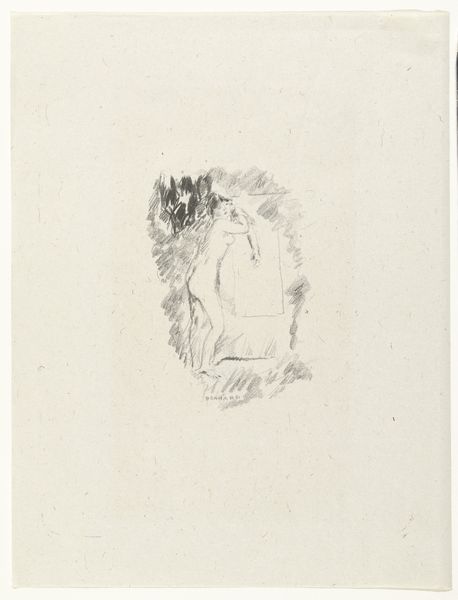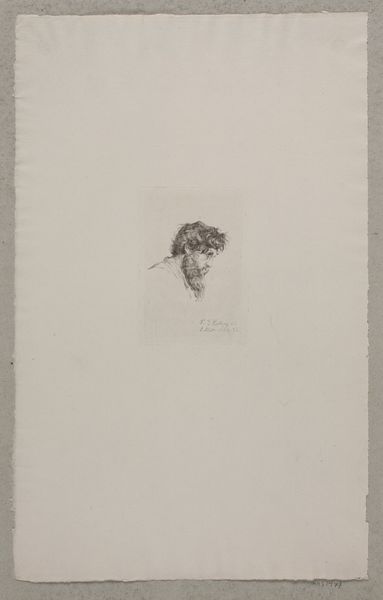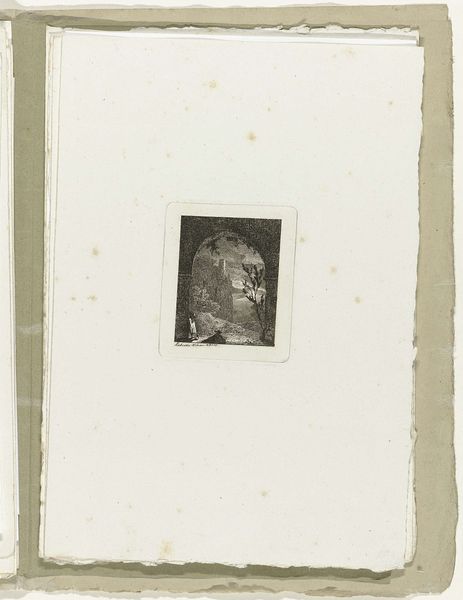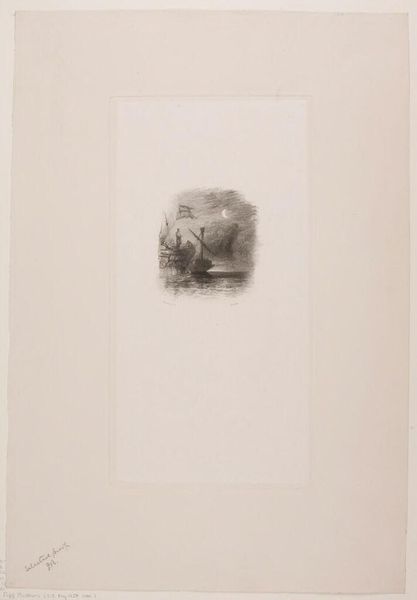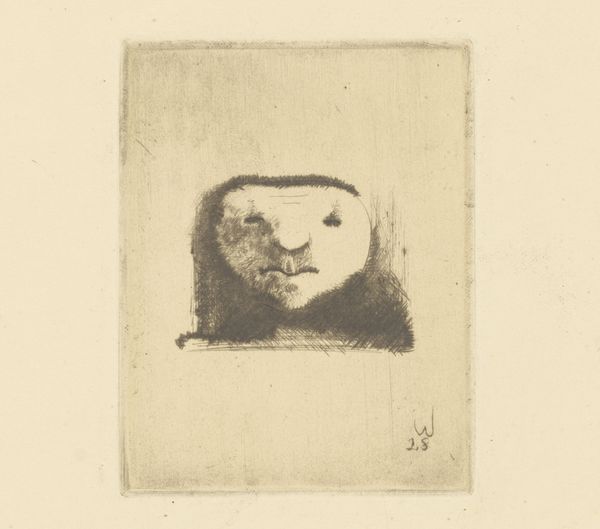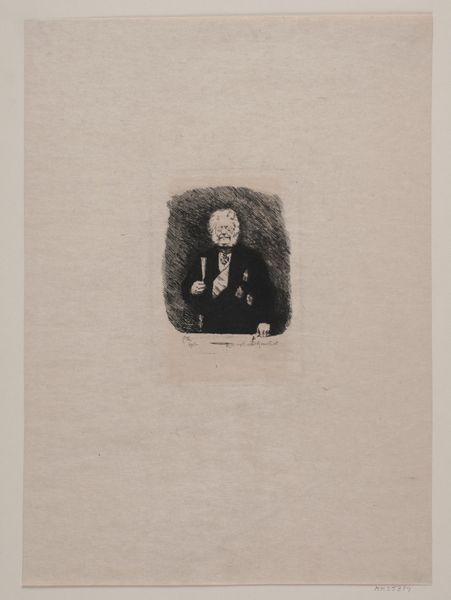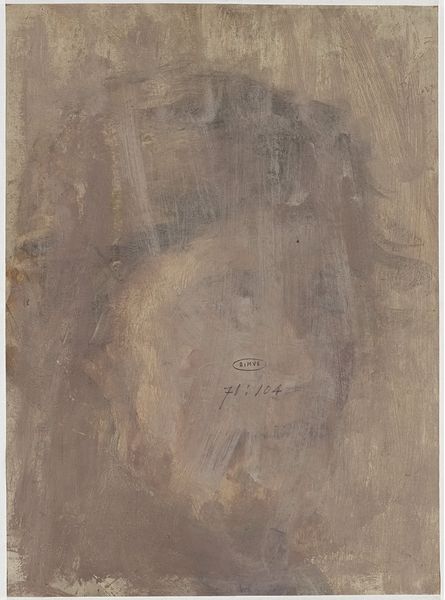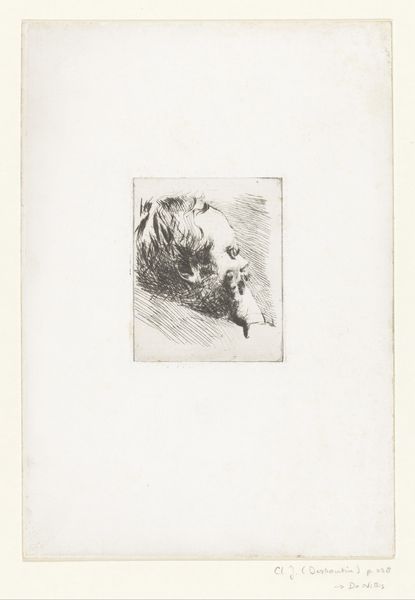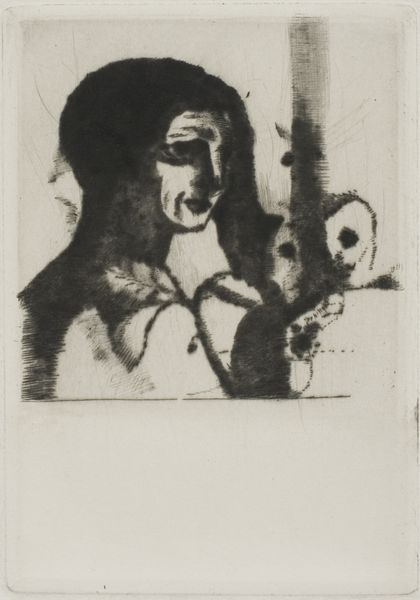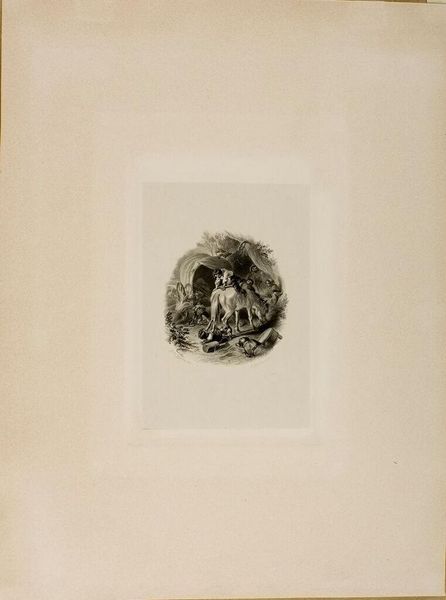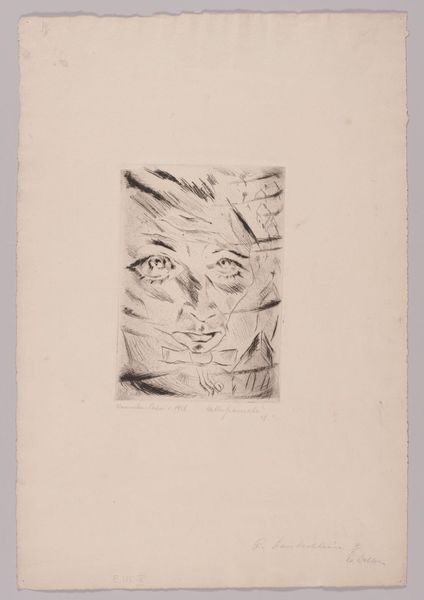
drawing, print, metal, etching
#
portrait
#
drawing
#
animal
# print
#
metal
#
etching
#
realism
Dimensions: 148 mm (height) x 105 mm (width) (plademaal)
Curator: Let's take a look at "Et hundehoved," or "A Dog's Head," an etching rendered by Otto Bache in 1901, currently residing at the Statens Museum for Kunst. What's your immediate reaction? Editor: The first thing that strikes me is the contrast. The soft, almost blurry edges of the dog’s fur against the sharp, intelligent gaze in its eyes. There’s a weight of melancholy about it, perhaps even a touch of defiance. Curator: It’s interesting that you picked up on that. Bache was a painter known for his realistic portrayals of animals and scenes from everyday life. Now, this etching really exemplifies that commitment to realism, yet it's presented in a rather limited and arguably exclusionary way, considering who traditionally gets depicted in portraiture. How does this impact the reception of the work, would you say? Editor: Well, dogs are often seen as symbols of loyalty and companionship, virtues that are certainly tied up in social hierarchies and expectations. So, placing the dog in the traditional form of a human portrait could challenge notions about who deserves memorialization, dignity and even power. Is Bache then offering a critique of human-centric views? Curator: That's precisely the kind of dialogue I think this work encourages. When contextualized within that lens, we also need to consider that it was produced during a period of increasing social awareness of animal welfare and rights. Was it exhibited and seen by many? Editor: Not much is written on the public's reaction to this print specifically. However, one has to assume the image contributed to and was shaped by the general shift in how animals were being regarded in Danish society during that period. Curator: It prompts one to really reflect on where the art world—and we as people—place value and assign dignity, doesn't it? Editor: Indeed, this intimate depiction becomes a starting point for wider reflections on class, species, and even the structures of power embedded in representation itself. Curator: Agreed. "Et hundehoved" invites viewers to engage with questions of empathy and representation. Editor: An engagement that, for me, persists long after leaving the museum.
Comments
No comments
Be the first to comment and join the conversation on the ultimate creative platform.
